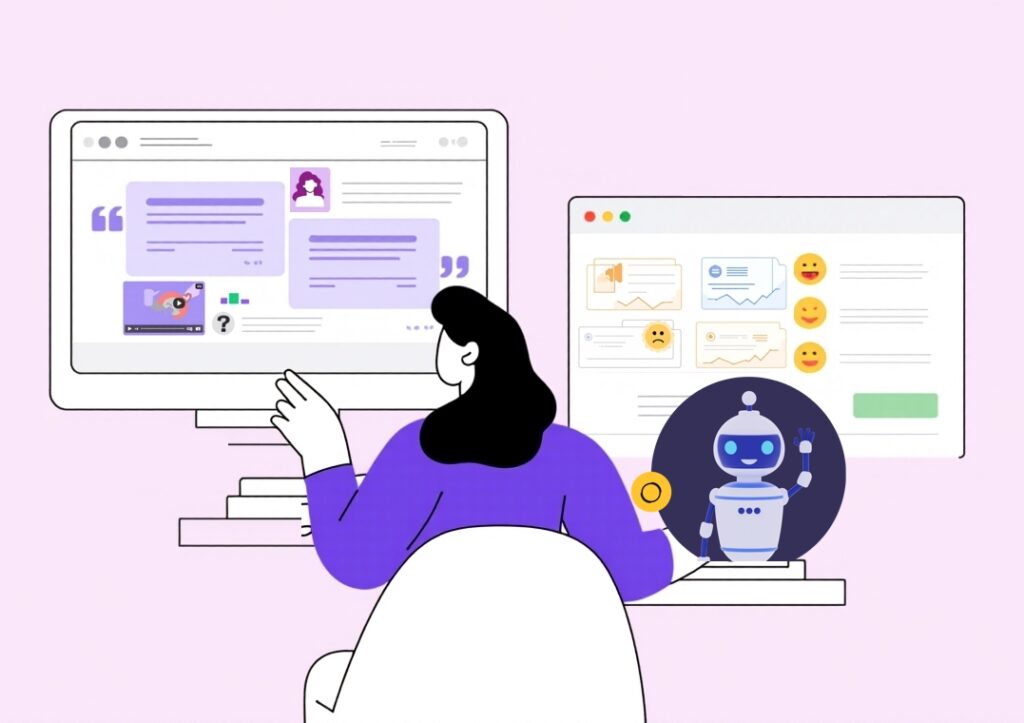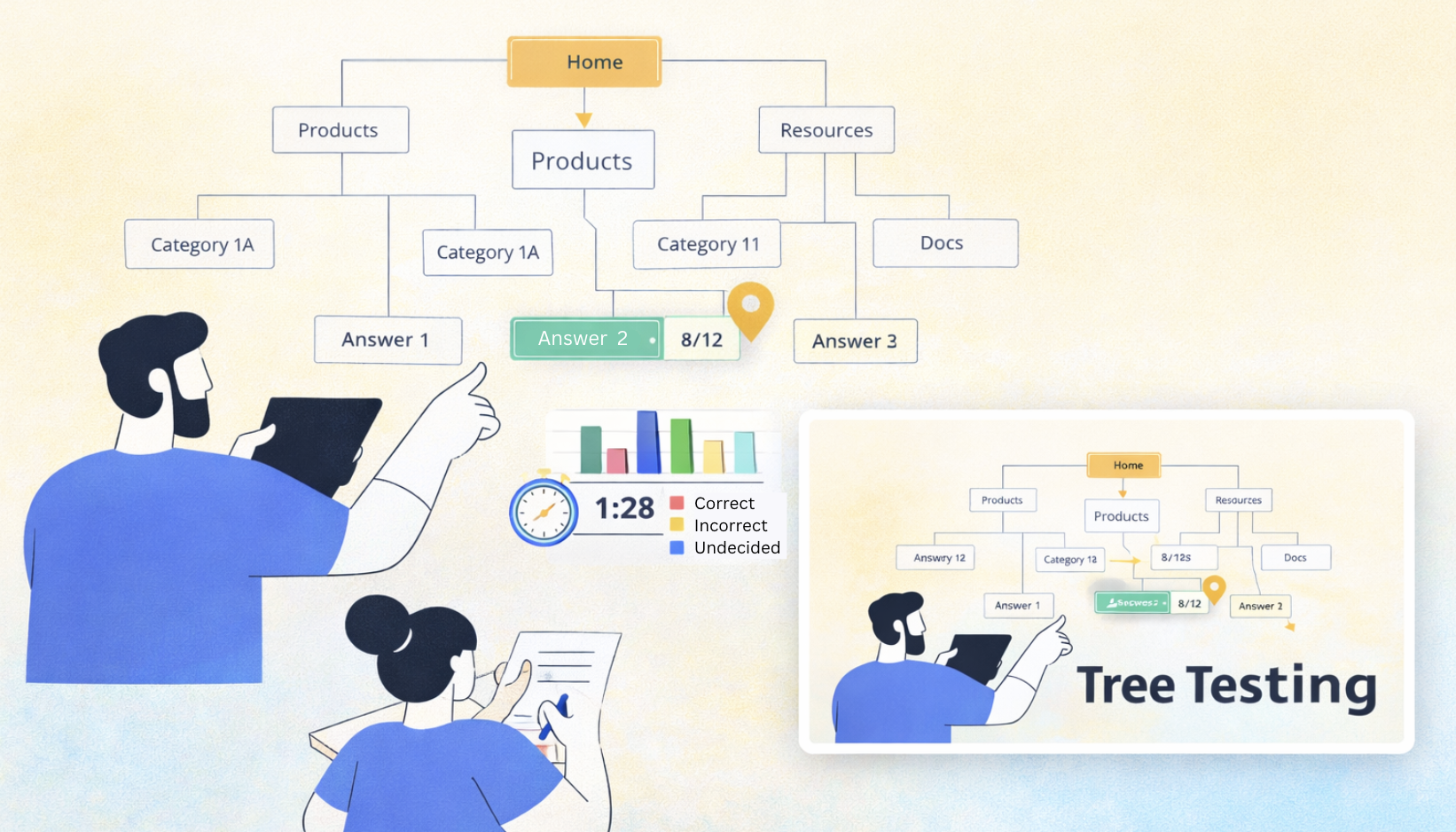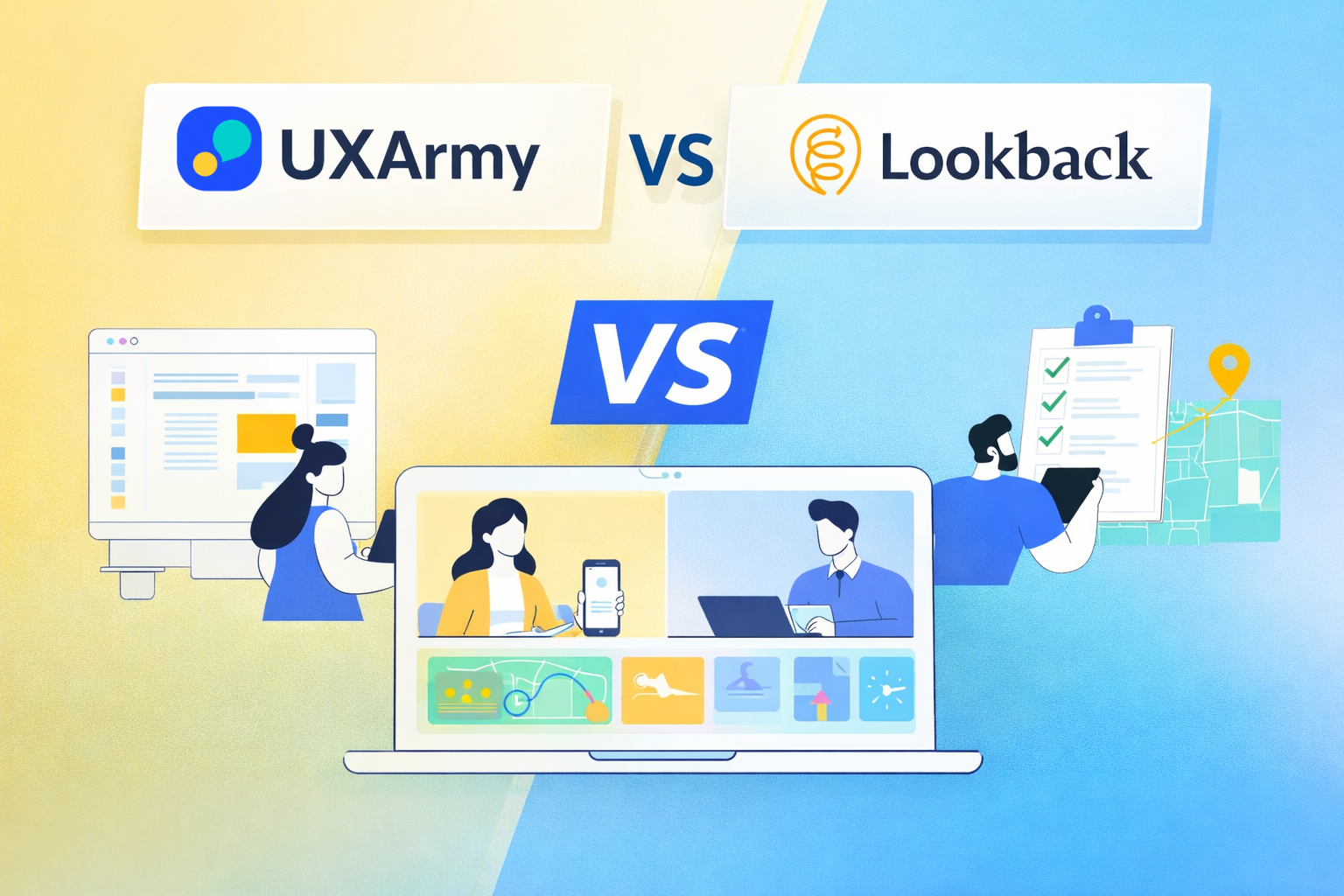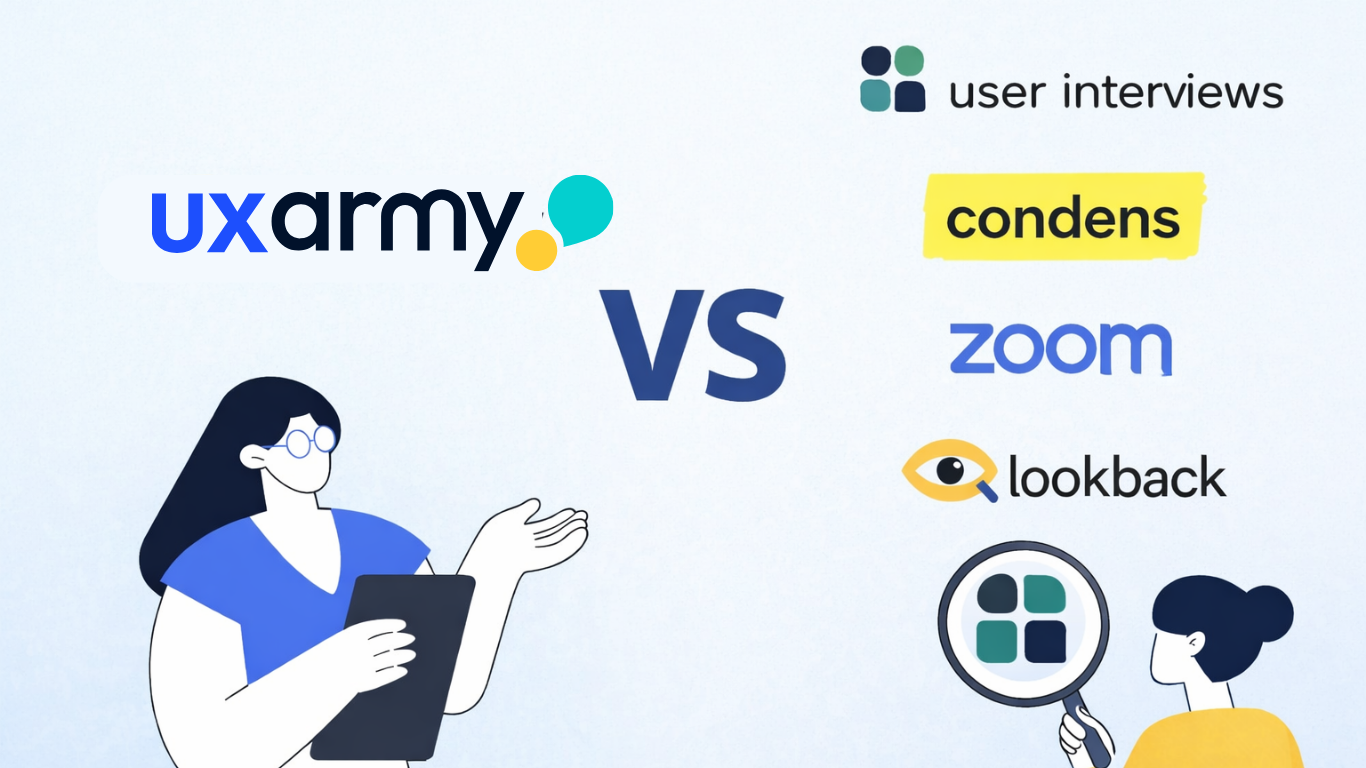In a world where user expectations evolve faster than ever and news spreads instantly on social media, companies can’t afford to guess. That’s where UX researchers come in. These professionals uncover user needs, behaviors, and pain points to drive informed product decisions.
Whether you’re considering a career switch or want to future-proof your role in digital design, this guide breaks down what a UX researcher does, how the job differs from other research roles, the skills required, salary trends, and how AI is reshaping the profession.
TL;DR: What You’ll Learn in This Blog
- What UX researchers actually do
- How the UX research role is changing with AI in 2026
- Skills required: both traditional and AI-driven
- Salary levels by country
- How to start your UX research career
What Does a UX Researcher Do?
A UX researcher plays a foundational role in shaping digital experiences that feel intuitive and meaningful. While designers create interfaces and developers build them, UX researchers ensure the ideas are grounded in how real users think, behave, and feel.
At its core, the role is about uncovering user needs and motivations so that product decisions are evidence-based, not assumption-driven. It’s part psychology, part detective work- investigating the “why” behind user actions.

How UX Research Differs from CX and Market Research?
Good question. People often confuse UX research, CX research and market research. After all, they all aim to understand people whether they’re users, customers, or target audiences. Let’s get the concepts right before we dig in. Here’s a quick summary.
- UX Research: Focuses on how people interact with a digital product like an app, website, or software platform. It’s about usability, accessibility, and whether users can complete tasks easily and enjoyably.
- CX Research: Looks at the broader journey across all brand touchpoints over time. This could include check-out kiosks, speaking to customer support, receiving a package, or even visiting a retail store.
- Market research: Explores consumer trends, competitive positioning, and market needs. The goal is to guide business and marketing decisions. For example, decide what new product to build based on a gap in the market.
In organizations that have both UX and CX teams, while both CX and UX teams aim to create great experiences for customers and potential users, UX teams focus on the online experiences and how to create seamless digital experiences whereas CX looks at the customer journey in other ways mainly covering offline experiences and collaborating with UX team on the digital aspects.
For a deeper dive into how UX and CX differ, see NNGroup’s comparison of UX vs CX
Now that you understand how UX research differs from CX and market research, let’s explore when and why UX research is conducted.
To learn more on UX Research methods, see UXArmy’s What is Usability Testing? Test Types & Examples
Ready to build that trust and kickstart your research?
let’s make trust the foundation of every project you work on.

What Triggers UX Research?
The exciting thing about UX research is that it isn’t limited to one phase of the product lifecycle. It can (and should) happen at multiple stages. That means you get to be involved before a product is built, during design, and even after launch.
Often, UX research is triggered when a team is faced with uncertainty:
- Launching a new product in an unfamiliar (overseas) market
- Redesigning an existing feature that’s underperforming
- Seeing users drop off at a specific point in the conversion funnel
- Deciding between two competing product ideas
- Understanding how people currently solve a problem the product is targeting
Sometimes research is proactive, such as foundational discovery studies that shape the product roadmap. Other times it’s evaluative, such as usability testing before a release or diagnosing issues post-launch.
What Are The Typical UX Research Questions?
The types of questions UX researchers explore vary by stage and business need. Early in the product development cycle, they might investigate:
- Who are our users and what are their goals?
- How do they currently solve this problem?
- What motivates or frustrates them?
During design, researchers might test:
- Can users navigate the interface without confusion?
- Are the labels, icons, and flows intuitive?
- Where do users get stuck?
Later, in a more mature product, researchers may evaluate:
- What’s preventing adoption or engagement?
- How does our mobile app compare to alternatives?
- Are users achieving their goals and how do they feel about it?
For more UX research questions, seeUXArmy’s Question Bank 2026. Having access to a ready reference of validated questions ensures that your studies remain consistent, unbiased, and goal-oriented.
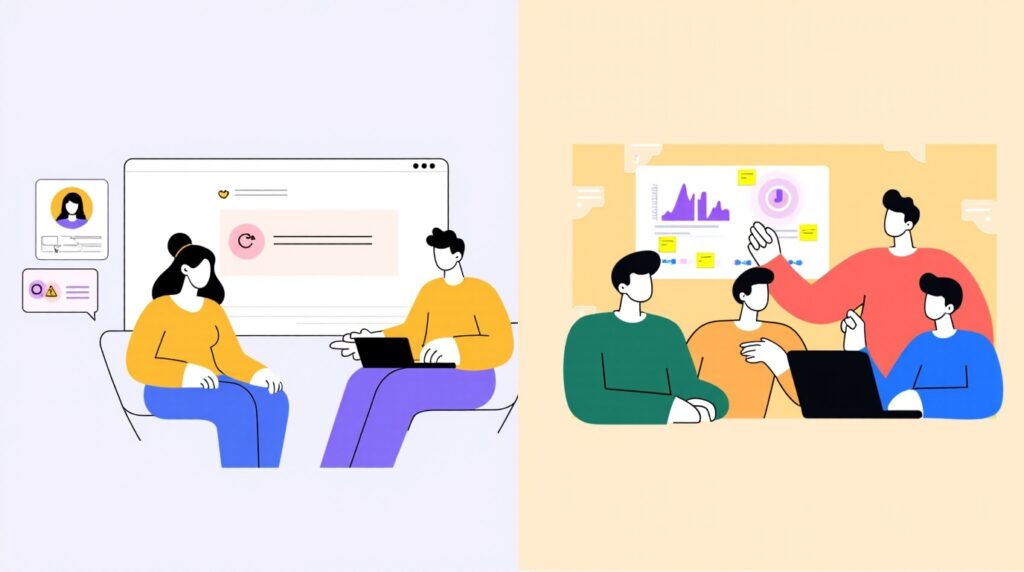
So, What are the Key Responsibilities of a UX Researcher?
To answer these questions, UX researchers use a mix of methods, including user interviews, usability testing, diary studies, card sorting, surveys, field studies, and behavioral analytics.
Core Responsibilities of the UX Researchers includes:
- Selecting the research methodology that best suits the goal of the study
- Sourcing research participants that fit the target profile
- Planning & running user research studies
- Analyzing user behavior and feedback
- Presenting research findings to stakeholders
- Collaborating with UX designers, product managers, and engineers
What are the Key Deliverables of UX Research?
The output of UX research is what is referred to as user insights. User insight is a clear, evidence-based understanding of users’ goals, challenges, behaviors, and mental models.
Deliverables vary by project but typically includes:
- Usability reports
- Personas & journey maps
- Interview synthesis decks
- Video reels with annotated clips
These outputs directly influence roadmap prioritization, feature design, and success metrics.
For example, a research study might reveal that users abandon a checkout flow due to confusing payment terminology. That insight could lead the design team to simplify labels, the product team to reorder steps, and the development team to adjust logic for smoother handling.
As Janice Fraser, an early expert on lean UX and startup strategy, once said:
“Good research doesn’t just answer questions—it moves teams forward.”
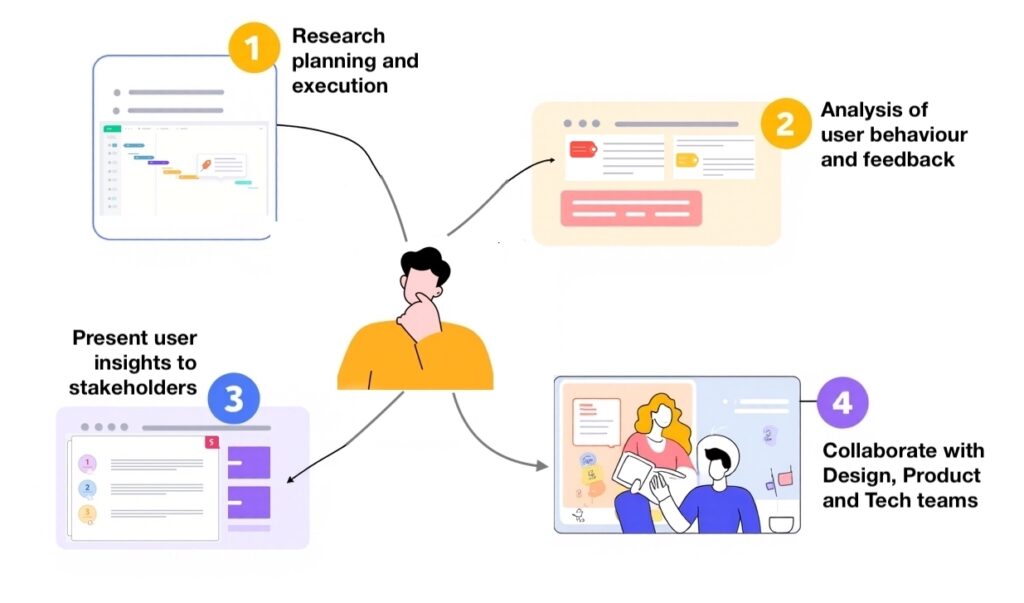
Who Do UX Researchers Work With?
UX researchers are highly collaborative. While their work involves solo tasks like preparing interview guides or analyzing data, they operate at the center of cross-functional product teams.
They frequently work with:
- UX Designers: Researchers provide designers with user insights and usability findings. These insights shape everything from information architecture to micro-interactions. In turn, designers create prototypes that researchers can use for usability tests creating an iterative cycle.
- Product Managers (PMs): PMs rely on researchers to validate assumptions, define user problems, and derisk big decisions. UX researchers help PMs ensure product ideas are rooted in actual user needs, not just stakeholder opinions or business targets.
- Developers: Although developers aren’t always directly involved in user sessions, researchers often involve them in observation, especially during usability testing. This helps developers understand why the user journey was created in a certain way and why the steps that they may perceive to be inefficient are there.
- Data Analysts: In data-mature organizations, researchers often pair qualitative insights with behavioral analytics. A spike in user drop-off revealed by data can be further explored through interviews or usability tests to uncover the “why.”
UX Researcher Salary Levels
Salaries vary widely based on location, experience, and industry, but UX research is generally a well-compensated career.
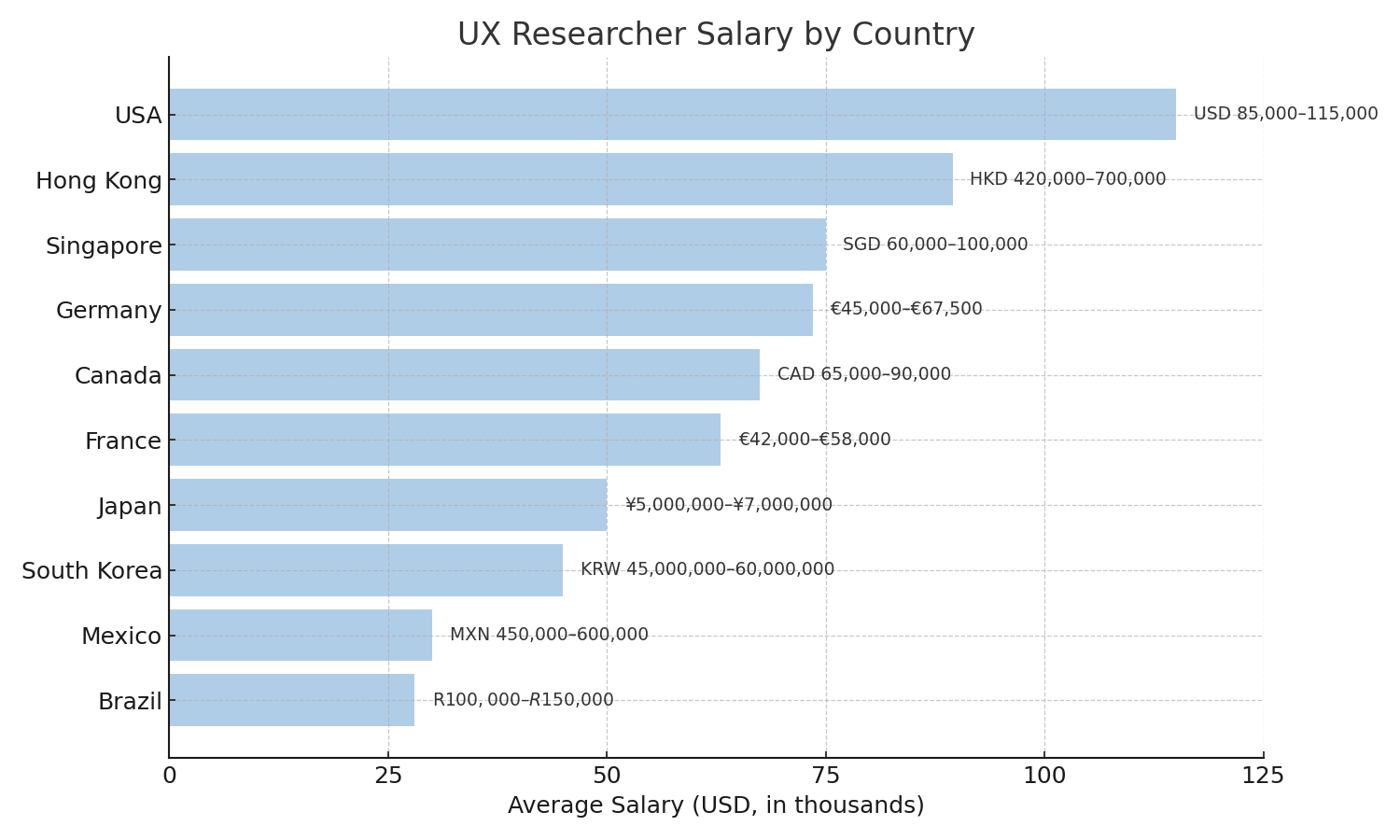
The salary range is broad because it covers entry to senior level positions. Keep in mind, the senior roles may go even higher. If you’re interested in seeing the Salary range by entry, mid and senior positions, refer to the table below.
| Country | Entry-Level | Mid-Level | Senior-Level |
|---|---|---|---|
| USA | USD 85,000 | USD 100,000 | USD 115,000 |
| Hong Kong | HKD 420,000 | HKD 560,000 | HKD 700,000 |
| Germany | €45,000 | €56,000 | €67,500 |
| Canada | CAD 65,000 | CAD 77,500 | CAD 90,000 |
| Singapore | SGD 60,000 | SGD 80,000 | SGD 100,000 |
| France | €42,000 | €50,000 | €58,000 |
| Japan | ¥5,000,000 | ¥6,000,000 | ¥7,000,000 |
| South Korea | KRW 45,000,000 | KRW 52,500,000 | KRW 60,000,000 |
| Mexico | MXN 450,000 | MXN 525,000 | MXN 600,000 |
| Brazil | R$100,000 | R$125,000 | R$150,000 |
Sources: UXArmy internal estimates based on Glassdoor (2024), Payscale, Levels.fyi, LinkedIn, Indeed, Regional labor data
How AI Is Changing UX Research Jobs, Tools, and Skills in 2026
AI hasn’t replaced UX researchers, and it’s not going to anytime soon. Instead, it’s quietly changing how they work, helping with speed and scale while amplifying human insight. Think of AI like an eager but rather inexperienced junior researcher: great at sifting through large volumes of data quickly, not so great at understanding nuance or reading between the lines. Yes, you would need to check AI’s work.
Today’s UX researchers are experimenting with AI-powered UX research tools like UserTesting, Maze, UXArmy (which supports mobile app testing) and Dovetail to transcribe interviews in real-time, spot sentiment patterns, generate auto-summaries, or surface recurring themes across large datasets. Some are even using AI to generate rough test plans or survey questions.
But human judgment still matters. When a respondent hesitates or offers a culturally specific example, AI tools may miss the significance. That’s where the researcher’s critical thinking, cultural understanding, and communication skills come in.
Traditional Skills You Still Need (And Why They’re Still Critical)
1. Research Methods (Qualitative & Quantitative)
Understanding when to use user interviews, usability testing, surveys, card sorting, tree testing or focus group discussions is still foundational. No AI can replace your ability to design methodologically sound studies, especially when dealing with humans and unpredictability.
AI impact: Tools like UserTesting, Maze, Lyssna and UXArmy can help you scale analysis but not choose or customize the right method. These skills are becoming more important, because you’ll need to sense-check what the AI outputs.
2. User Interviewing & Facilitation
AI can summarize transcripts but it still can’t read body language, adapt tone mid-session, or catch unspoken hesitations. Building rapport, probing deeply, and knowing when to pivot, these are human skills that will remain irreplaceable.
In invisible UI contexts (e.g. Grab’s voice assistant, Alexa), these skills are even more crucial, as the user’s mental model is hard to capture without direct probing.
3. Analytical Thinking
AI can cluster themes. But you, the researcher, bring the sense-making. You decide: What does this really mean for the product? What’s the emotional weight behind this trend? That’s interpretation, not automation.
As Jonny Schneider (ThoughtWorks) put it:
“UX researchers are becoming sense-makers. They’re not just collecting data, they’re connecting the dots to reveal meaning.”
4. Report Writing and Insight Storytelling
AI can draft a summary. But it can’t tailor your message to stakeholders, or connect insights to strategic decisions. The ability to craft clear, compelling stories using video clips of key moments, quotes, and product-relevant takeaways is what moves teams to act.
With AI summarizing faster, your job is to communicate better. This skill becomes more valuable, not less.
Emerging Skills to Succeed as a UX Researcher for the Next 10 Years
1. Researching Invisible Interfaces
Invisible UI includes voice, gesture, ambient triggers, and predictive AI actions. As these grow, researchers must move beyond just the screens. You’ll need to study behavior in natural contexts, not just labs or Figma flows.
Example: Grab is piloting an AI Voice Assistant in Singapore that enables visually impaired users to book rides using voice commands. Understanding user expectations around tone, timing, and confirmation now requires contextual inquiry and voice usability testing.
2. AI Literacy for Research
You don’t need to be a programmer, but you do need to understand how to prompt AI, its limitations, and how to audit its output. You’ll work with AI to:
- Generate interview questions
- Auto-tag feedback themes
- Flag anomalies in behavior logs
UXArmy’s AI Prompt Library is a helpful resource for learning how to work with AI in a research workflow.
3. Trust & Ethics Testing
As systems become more predictive and proactive (think AI agents that act before users ask), UX researchers must test:
- Trust: Does it feel helpful or creepy?
- Transparency: Can the user understand why the system acted?
- Control: Can the user undo or opt out?
This is especially vital in domains like health, finance, and mobility, where stakes are high.
Soft Skills that Will Continue to Matter
While technical chops are crucial, soft skills determine how well your work influences decisions. UX researchers are change agents, and these are the traits that make you effective in the real world.
1. Empathy (for Users and Stakeholders)
Empathy isn’t just about feeling users’ pain. It’s also about understanding the pressures your product manager or development team faces. It helps you balance conflicting needs and advocate for users in a way that brings others onboard.
“UX research isn’t just about understanding users. It’s about helping your team understand them too.” Erika Hall, Author of Just Enough Research
2. Communication and Facilitation
Great researchers know how to present insights in ways that resonate with different teams. You also need to facilitate workshops (e.g., journey mapping, affinity clustering), and run stakeholder interviews to clarify business objectives. Clarity and influence go hand in hand.
3. Curiosity and Critical Thinking
Good researchers ask “Why?” Great ones ask it five times.
Being genuinely curious – about behaviors, blockers, motivations – fuels better research. Critical thinking helps you challenge assumptions and dig beneath surface-level observations.
4. Collaboration and Diplomacy
UX researchers don’t work in isolation. You’ll often navigate input from product managers, designers, developers, and marketing teams. That takes tact and confidence, especially when research findings challenge existing beliefs.
Knowing when to push, when to listen, and how to co-create solutions builds your credibility.
5. Resilience and Adaptability
Not every study will go as planned. A research participant might ghost you, a prototype might crash mid-test, or a stakeholder may ignore your findings. Successful UX researchers roll with the punches, iterate quickly, and keep focus on the big picture.
Will AI Take UX Research Jobs?
The short answer is: no, but it will change what you do.
If you’re exploring UX research as a career, this is an exciting time to jump in. AI is taking care of the grunt work, which means your job will be to ask better questions, push product teams to think deeper, and champion the user voice with greater clarity.
How to Become a UX Researcher in 2026: Step-by-Step Career Guide
If you’re aiming to grow as a UX researcher, here’s how to build these skill sets.
- Start with hands-on experience: Redesign a familiar app, run usability tests with friends, or volunteer for UX research projects.
- Study real case studies: Sites like NNGroup, UX Collective, and Dovetail Blog share great examples.
- Practice storytelling: Turn your insights into a 5-minute pitch and practice with your mentor or friends. If they nod along, you’re on the right track.
- Get feedback on your process: Join UX research Slack communities or mentorship circles to get real critiques.
- Learn how to prompt AI for UX research: OpenAI’s guide on prompting is helpful for understanding how to shape effective outputs. If that’s too technical for you, UXArmy’s AI prompt library provides a more conversational approach.
Experience the power of UXArmy
Join countless professionals in simplifying your user research process and delivering results that matter
Frequently asked questions
How is AI changing the role of UX researchers in 2026?
AI automates repetitive tasks like transcription and sentiment tagging, allowing UX researchers to focus on strategic thinking, human insight, and collaboration.
Will UX researchers be replaced by AI?
No. AI supports UX research but cannot replace skills like empathy, critical thinking, and storytelling that make researchers effective.
How is UX research different from CX research?
UX research focuses on digital interactions. CX research examines the full customer journey, including offline touchpoints like support calls and packaging.
Is UX research a senior role?
Many UX research roles are mid-to-senior level because they impact strategic decisions. However, entry-level positions are growing as the field expands.
What skills do UX researchers need in 2026?
A mix of classic research skills (methods, interviewing, analysis) and new ones (AI literacy, voice UI testing, trust u0026amp; ethics evaluation).
What’s the difference between a UX researcher and a UX designer?
A UX researcher studies user behavior to uncover insights, while a UX designer uses those insights to create intuitive digital experiences.
Do I need a degree to become a UX researcher in 2026?
No, a formal degree isn’t required. Many UX researchers in 2026 enter the field through bootcamps, online courses, or hands-on experience with user research tools.
How do I become a UX researcher with no experience?
Start by conducting small usability tests, analyzing digital products, and building a UX research portfolio using tools like Maze, Lyssna, UXArmy.

